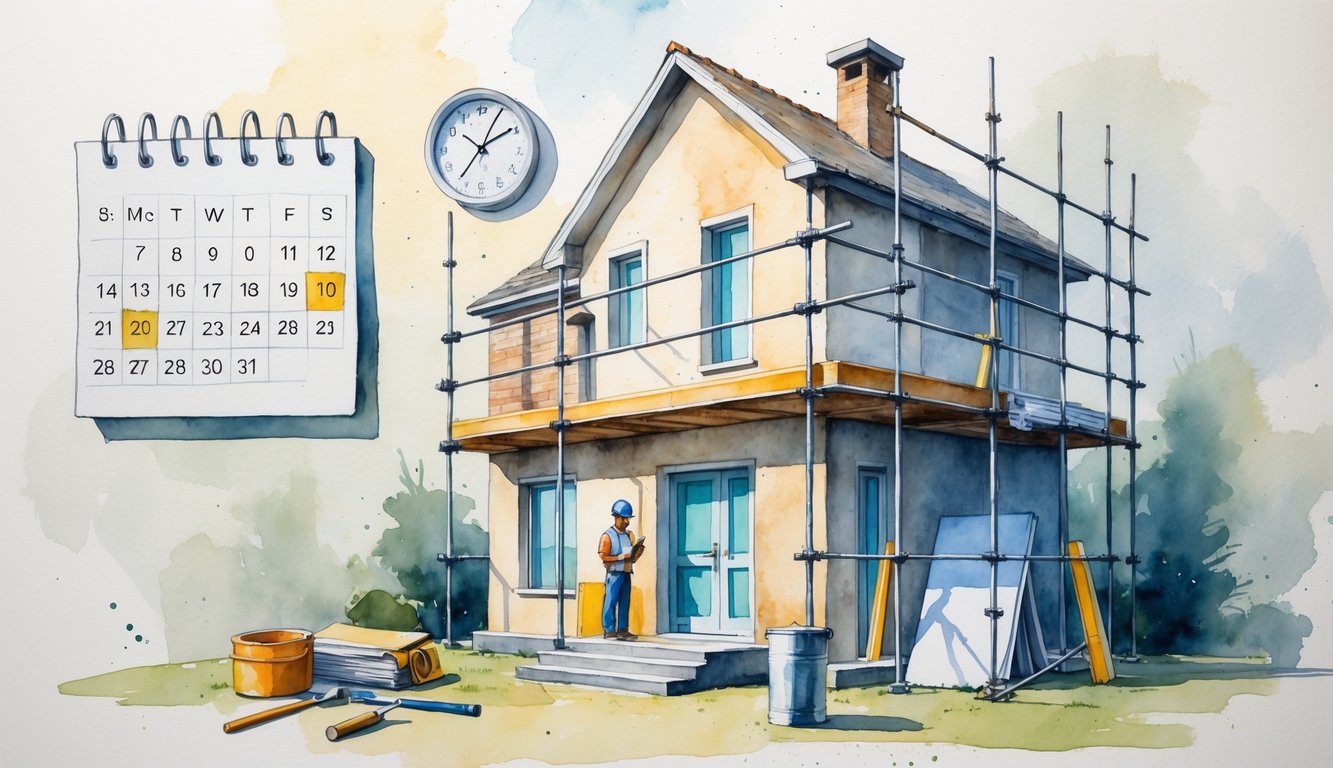
Budget Considerations and Contingency Planning
Rip up old carpet, electrician ghosts you, and then the dreaded “Approval pending.” Instantly, your bank account starts sweating. Financial unpredictability is the real villain in every renovation, especially when permits stall. Most people forget how fast those “minor” hiccups destroy your carefully planned numbers.
Setting a Realistic Contingency Budget
Everyone loves to say, “Oh, just save 5-10% for contingencies,” but I’ve never met a client who actually thought that was enough once delays, code changes, or inspector holidays hit (Compton Construction, 2024). So yeah, I triple the hassle in my head—$30,000 kitchen rewiring? Add a surprise panel and watch it balloon.
One structural engineer I know—guy’s seen everything—laughed at me: “Go under 8% in this city during peak season and you’re just gambling.” Never trust default budgets. I keep a spreadsheet of lumber prices, delivery times, even tool rental rates. Ignore rising costs or the word “overage” and you’ll learn the hard way. Lately, contingency funds aren’t a backup—they’re the only reason I survive surprise reviews and discontinued tile.
Adjusting Financial Plans for Delays
Last time the permit dragged past two months, the homeowners had to tap a line of credit (variable interest, of course) just to keep the plumber. Timing kills: fridge still in a box, tile importer jacks up rates, painter wants a reschedule fee. No point blaming the city clerk—every delay snowballs costs and living expenses.
Here’s the ugly truth: banks never process extensions fast enough, so I end up covering extra rent with my own credit card. No one warns you about insurance update timelines or how a missed approval can trigger another round of compliance upgrades—suddenly, your contingency budget is toast. Watched a client’s mortgage broker laugh: “Seasonal delays? Time for a new estimate.” It’s not paranoia, it’s just how it goes. Every remodel needs a budget that can flex the minute approvals hit a wall.
Indoor Projects vs. Outdoor Projects: Navigating the Seasons
Permits, emails, and always a game of contractor roulette. Indoor projects just drift along on their own weird timeline, totally different from outdoor work. Is there a trick? If so, I haven’t found it.
Why Some Indoor Projects Get Approved Faster
Paperwork for an indoor kitchen revamp? Sometimes it just zips through—no clue why, honestly. Maybe everyone in the planning office gets a little giddy when it’s January and they’re not freezing on rooftops. I mean, who’s volunteering to shovel snow off a roof for an inspection? Not me. Permit review stats (yeah, NAHB, 2024—if you trust those) say indoor jobs that don’t mess with structure get signed off 18% faster in winter. Probably because inspectors aren’t out chasing weather disasters.
Nobody’s redoing siding in a blizzard. Indoor stuff—bathroom waterproofing, swapping cabinets, boring flooring upgrades—flies through. I’ve seen it. Wanda at the permit desk (she’s a legend, by the way) told me last winter, “Indoor flooring? Always easier, less hassle. We barely look at it.” But if you add electrical work, especially panel upgrades, suddenly it crawls. Painting? Room conversions? No contest—way easier than exterior decks. Still, it bugs me: why did my neighbor’s laundry room get a stamp in 48 hours, but my window replacement sat in limbo for a month? No one’s explained that one.
Strategic Timing for Outdoor Projects Like Roofing and Siding Replacement
Roofing permits in April? Forget it. That’s when every single person in town realizes their shingles are toast and floods the city with applications. Last time I replaced mine, the city office looked like a tornado hit—literal stacks of roof permits (“Thirty-four waiting, nobody assigned,” the clerk grumbled). Steve the builder (lives down the block) warned me, “Spring’s chaos. Storm claims everywhere. You’ll wait.”
Here’s a weird bit: my city (St. Paul, MN, if you’re curious) gets slammed with 40% more exterior permits in spring. They triage, but it’s a mess. Some roofers even fudge “emergency” repairs to cut the line. Siding’s no better—warped panels from last winter? Inspectors barely care, just lump it in with door checks to save themselves a trip. It’s like a traffic jam in the city office—everyone staring at each other, nobody moving. Last fall I rescheduled siding three times: rain, city backlog, and then Main Street shut for a festival, so inspectors just… didn’t show up for a week. Seriously.